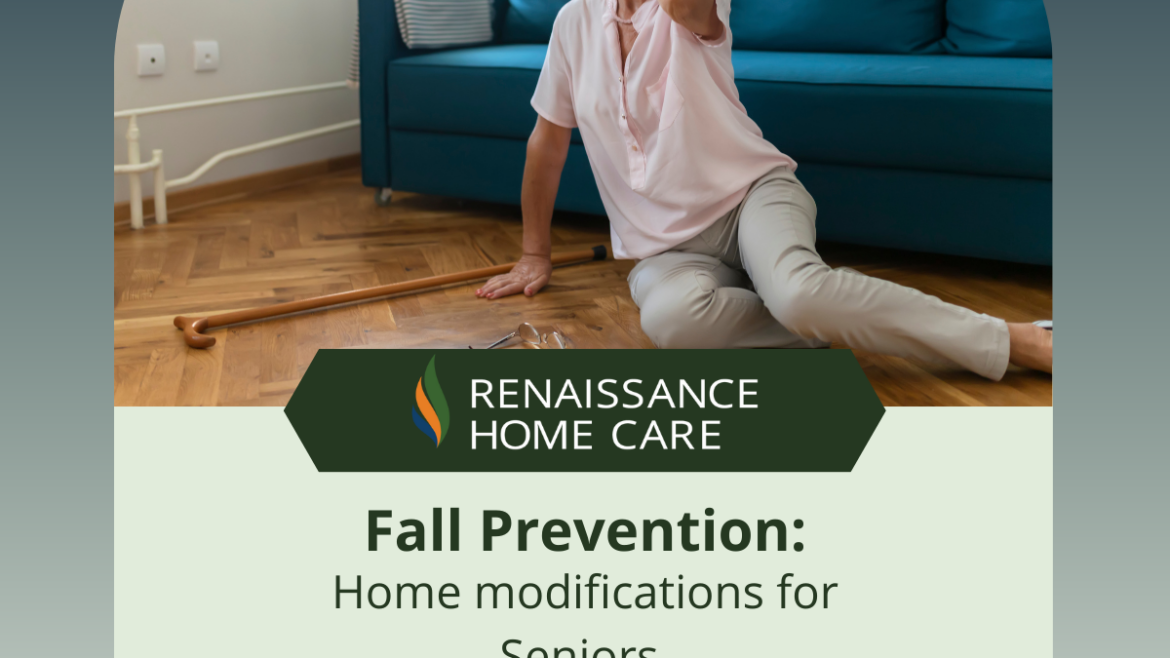Since home is where we spend most of our time, most of us find it relatively easy to move around without thinking about our safety. As we get older though, the importance of maintaining a safe home becomes more important. Most people prefer to remain in their homes as they age, yet homes that were once supportive may present problems over time that could lead to falls and other injuries. As the leading cause of fatal and nonfatal injuries for older Americans, falls threaten seniors’ safety and independence, and generate enormous economic and personal costs. As older Americans spend more time in their homes, it is all the more important to ensure that the home environment is free from fall risks.
Falls, with or without injury, can carry a heavy quality of life impact to an older adult. That’s why it’s important to help your loved ones reduce the risk of falling and find ways to keep them healthy and independent for as long as possible. Here are a few ways to modify a home for safety and fall prevention, from your friends at Renaissance Home Care.
Modifying Your Home
Research shows that the optimal way to reduce fall risks for people at moderate to high risk of falls includes medication management, physical activity, and home modification. While medication management and physical activity may be fairly straightforward, home modification is often a less familiar topic. Home modification for falls prevention means changing or altering the environment to make daily activities easier, reduce the likelihood of accidents, and support independent living. For different parts of the home, this includes:
Floors, Stairways, Hallways:
- Ensure there are handrails on both sides of any stairs, and make sure they are secure.
- Hold the handrails when going up or down stairs.
- Try not to carry anything up the steps, and if doing so, try to still keep one hand on the hand rail.
- Ensure there is good lighting with light switches at the top and bottom of stairs and on each end of a long hall.
- Consider using motion-activated lights that plug into electrical outlets and automatically turn on when you walk by them to help illuminate stairwells and pathways.
- Keep walkways and living spaces tidy.
- Don’t leave books, papers, clothes, or any items that could cause obstacles on the floor or stairs.
- Check that all carpets are fixed firmly to the floor, so they won’t slip.
- No-slip which can be purchased at any hardware store, can be placed on tile and wooden floors for extra resistance.
Bathrooms
- Mount grab bars near toilets and on both the inside and outside of the tub and shower.
- Place non-slip mats, strips, or carpet on all surfaces that may get wet.
- Remember to leave a light on in the bathroom at night or use a night light that turns on automatically in the dark.
Bedrooms
- Put night lights and light switches close to the bed.
- Keep a flashlight by the bed to help see at night.
- Place a landline or well-charged phone near the bed.
Kitchen
- Keep frequently used pots, pans, and kitchen utensils in a place where they are easy to reach, near waist or eye level.
- Try to clean up spills immediately.
- Prepare food while seated to prevent fatigue or loss of balance.
Outdoor spaces
- If there are steps leading to your front door, make sure they are not broken or uneven and add non‐slip material to outdoor stairways.
- Keep the lawn, deck, or porch areas clear of debris, such as fallen branches.
- Consider installing a grab bar near the front door to provide balance when locking or unlocking the door.
- If possible, turn on a porch light at night and if you leave during the day but plan on returning home after dark.
- In the winter, treat outdoor walkways with an ice melt product or sand to make them less slippery.
For Seniors living on their own:
If you live alone and are concerned about falling, set up systems to ensure you can get help if you fall. One option is installing an emergency response system. If you fall or need emergency help, you push a button on a special necklace or bracelet to alert 911. This service is usually not covered by insurance, but could be life-saving if you experience a fall.
Another option is to carry a well-charged cordless or mobile phone with you as you move throughout the house. Have close friends and family on speed dial. Consider setting up a smart home device (a small speaker that listens and responds to commands when you call its name) that can quickly connect you to contacts or emergency response teams. Some smartwatches can be set up to make emergency calls at the push of a button and others can even detect sudden fall-like movements and automatically call for help.
Summing it Up:
As people are spending more time in their homes, it is all the more important to ensure that the home environment is free from fall risks and supports safe, independent living. Modifying your home to be safer and more accessible early, before a fall or injury occurs, can help to safeguard the health and well-being of your family for years to come.
Home modifications can make our homes more livable, safe, and comfortable for those of all ages and abilities. With these steps and assistance from loved ones, caregivers, or home health aides, one can ensure safety within their home and protection against falling. For more information and resources on how to modify a home for the safety of a loved one, contact Renaissance Home Care today!

